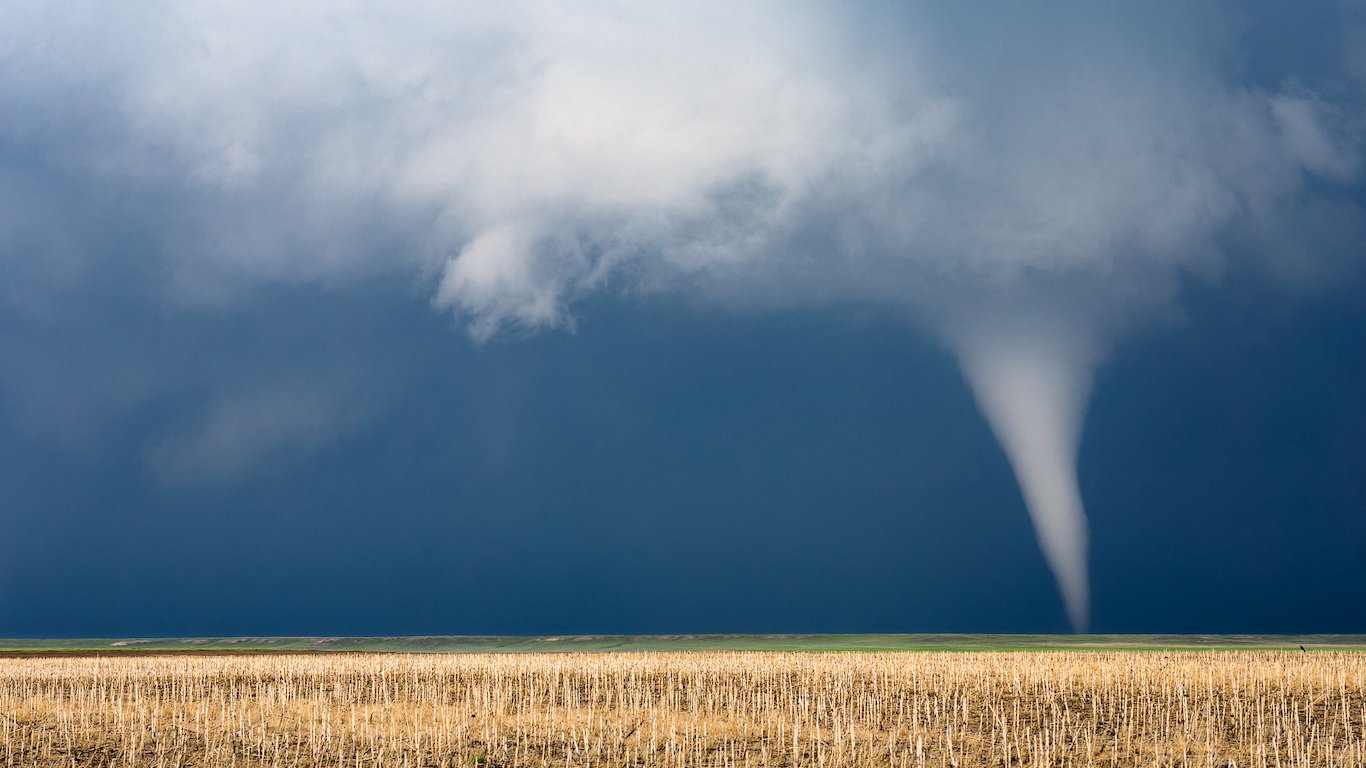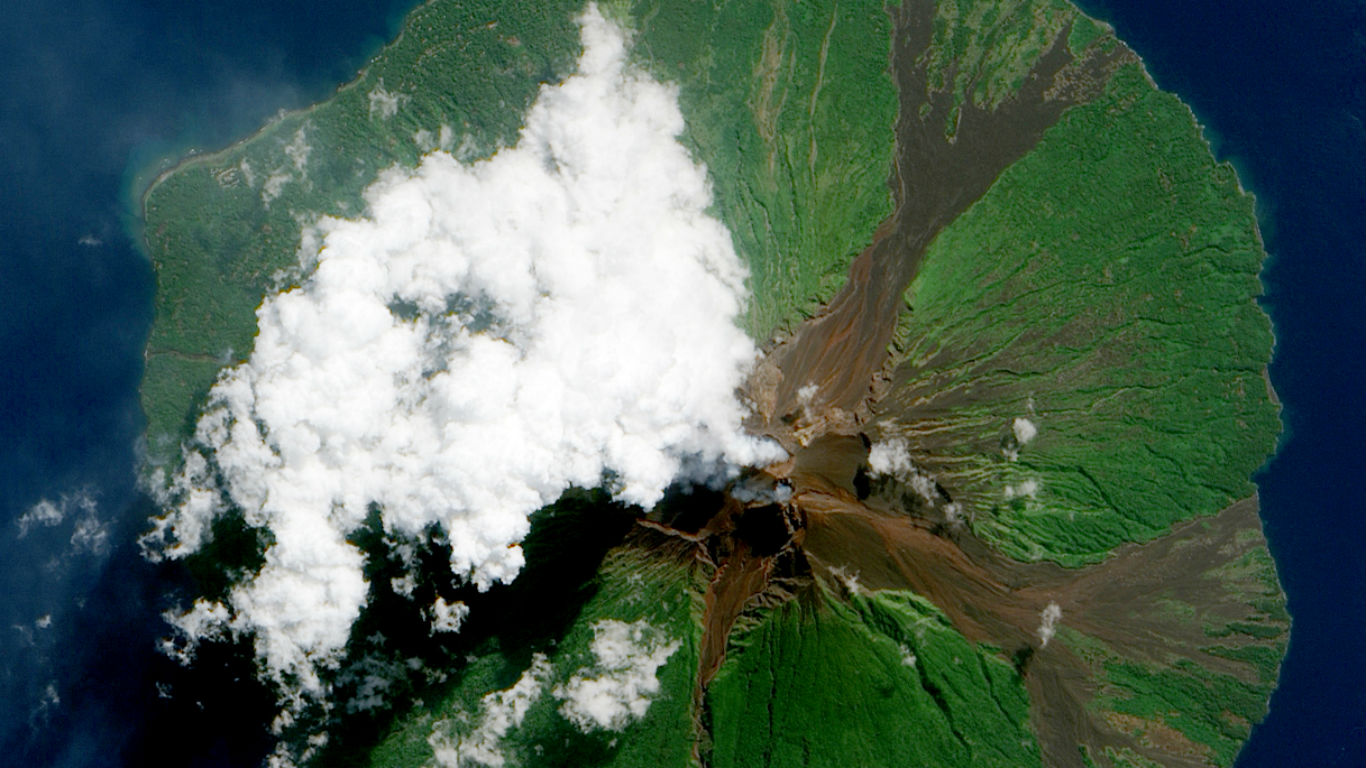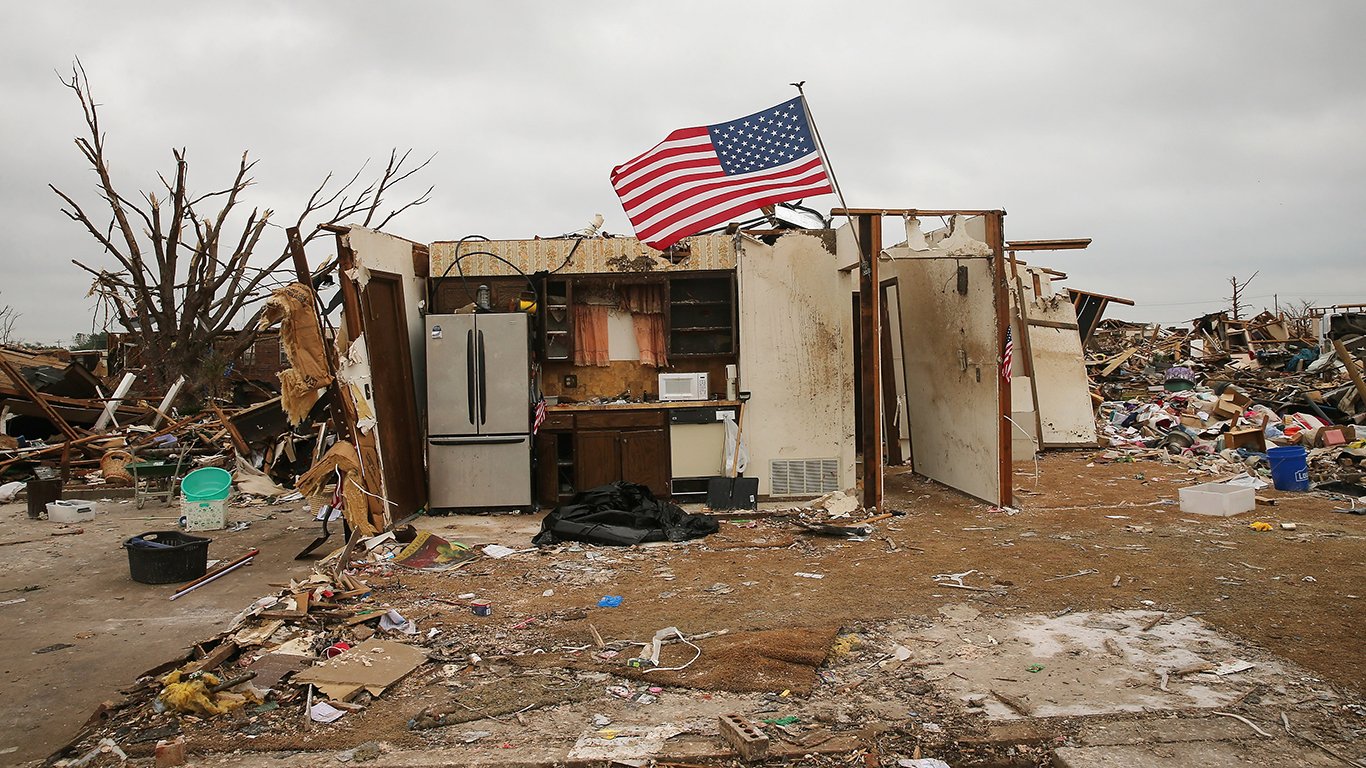

From hurricanes to wildfires to hail, the United States experienced another above-average year of catastrophic weather events last year. In fact, eighteen weather disasters inflicted losses exceeding $1 billion, one of which topped $100 billion.
These billion-dollar (and multi-billion-dollar) weather and climate disasters killed at least 474 people, led by Hurricane Ian, a massive Category 5 storm that slammed into Florida in September. The relentless drought and heatwave conditions that baked much of the country throughout the year, also resulted in considerable losses.
The number of these costly climate events, adjusted for inflation, averaged 7.9 per year from 1980 to 2022. But in the most recent five-year period, that average has more than doubled, to 17.8 per year, according to the National Oceanic and Atmospheric Administration. (Here are the deadliest billion-dollar weather disasters in U.S. history.)
To identify the 18 separate billion-dollar weather and climate disasters in the United States in 2022, 24/7 Wall St. reviewed the Billion-Dollar Weather and Climate Disasters database of the NOAA’s National Centers for Environmental Information. The NCEI has been tracking the inflation-adjusted cost of these disasters since 1980, using the consumer price index, or CPI, to adjust for inflation. The NCEI data combines public and private peer-reviewed disaster loss data to provide a historical record of these events as well as to quantify their direct costs.
Last year saw extreme storm activity in the central and southern regions of the contiguous United States, including massive weather systems that dumped hail in Texas, Arkansas, Minnesota, and Wisconsin, inflicting billions of dollars of damage. (Not all states experience as many natural disasters. In fact, California has had more weather disasters than any other state in the last decade.)
Out of these 18 expensive climate disasters, 11 are categorized as severe storms, meaning heavy precipitation over short periods of time, high wind gusts, and tornadoes, including more than 100 twisters that broke out over two days in April in the southeast.
Three hurricanes in 2022 caused between $1 billion and $113 billion in damage, mostly in Florida, while a stalled storm system over parts of Missouri and Kentucky in July turned creeks into raging, debris-laden torrents that killed at least 42 people and resulted in nearly $1.5 billion in damage.
Here are the billion-dollar climate disasters of the past year.
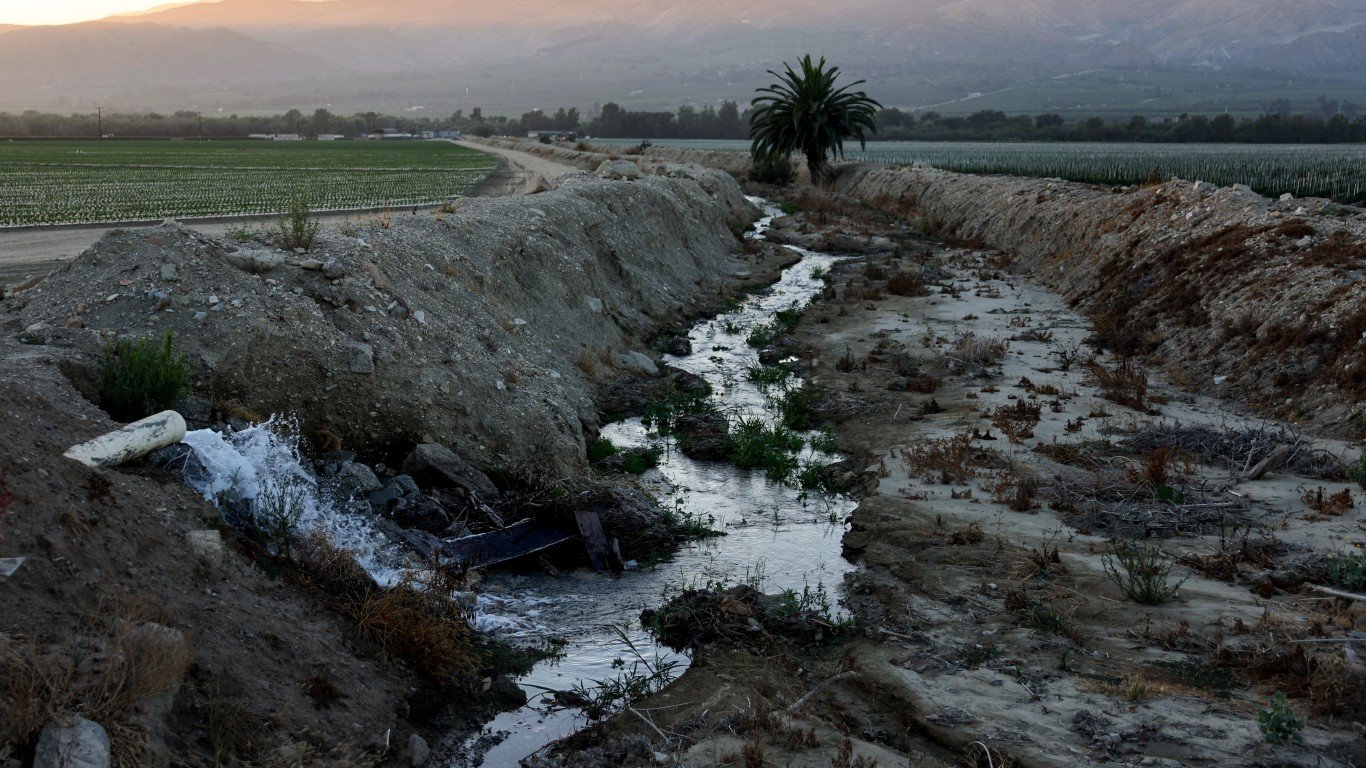
Western/Central Drought and Heat Wave
> Disaster: Drought
> Begin and end date: Jan 1 to Dec 31
> CPI-adjusted estimated cost: $22.22 billion – #2 highest of the year
> Deaths: 136
Relentless drought conditions and high temperatures throughout 2022 killed at least 136 people and inflicted widespread economic damage. By Aug. 3, nearly half of the contiguous United States and almost all of its 11 western states were experiencing “some level of drought,” according to the NOAA. Temperature records continued to be broken in different parts of the country well into November. Southern California instituted mandatory water restrictions in December, just weeks before torrential rains flooded much of the state at the start of 2023.
[in-text-ad]

Texas Hail Storms
> Disaster: Severe Storm
> Begin and end date: Feb 21 to Feb 22
> CPI-adjusted estimated cost: $1.06 billion – #16 highest of the year
> Deaths: 0
Strong and severe storms blew across northern Texas, dumping large amounts of ping pong-sized hail in much of the region in and around the Dallas-Fort Worth metropolitan area, damaging cars and roofs. Heavy winds shattered windows and toppled trees and power lines. The storms were followed by an arctic front that blew down the southern Plains into the Lone Star State.
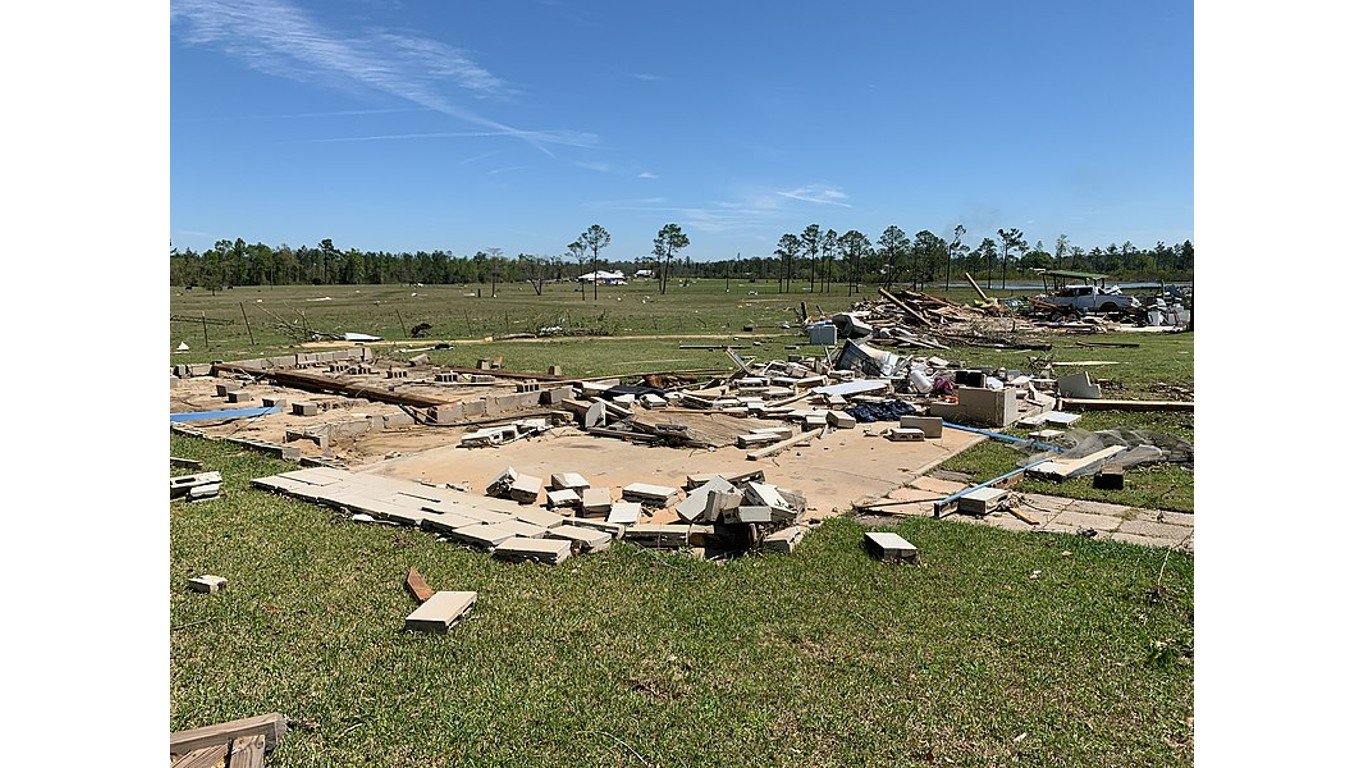
Southern Tornado Outbreak
> Disaster: Severe Storm
> Begin and end date: Mar 30 to Mar 30
> CPI-adjusted estimated cost: $1.31 billion – #14 highest of the year
> Deaths: 2
Several light to moderately strong tornadoes touched down at the end of March in Mississippi, Alabama, and the Florida panhandle, damaging homes and businesses and downing power lines and trees across the region. A line of severe thunderstorms formed over central Alabama, which also delivered strong and destructive straight-line winds. The system also affected the western tip of Tennessee, eastern Arkansas, and northern Louisiana.
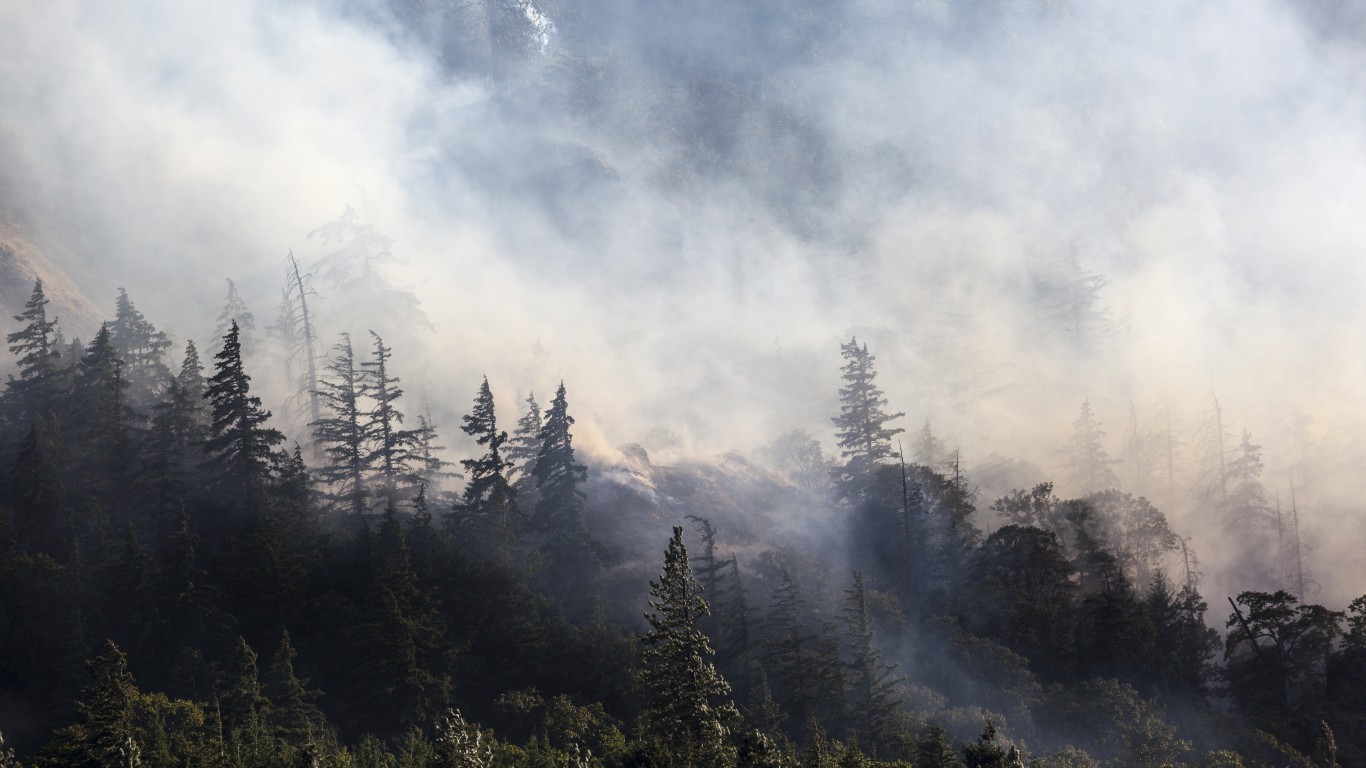
Western Wildfires
> Disaster: Wildfire
> Begin and end date: April 1 to Nov 30
> CPI-adjusted estimated cost: $3.11 billion – #4 highest of the year
> Deaths: 17
Western wildfires flared from the spring to the fall of 2022 as part of the larger droughts and heatwaves that struck much of the western region of the country last year. Wildfires have become so frequent in the west that some groups no longer track them on a seasonal basis. “As climate change increasingly has a more significant impact, we have been losing the concept of disaster seasons,” said the Center for Disaster Philanthropy, pointing to two massive fires in California and Colorado as well as dozens of others that broke out over months and seasons last year.
[in-text-ad-2]

Southeastern Tornado Outbreak
> Disaster: Severe Storm
> Begin and end date: April 4 to April 6
> CPI-adjusted estimated cost: $1.46 billion – #12 highest of the year
> Deaths: 3
Severe weather generated more than 100 tornadoes across the southeast, including a strong twister in Pembroke, Georgia, that measured EF4 on the five-level Enhanced Fujita Scale for tornadoes, meaning sustained winds of 166 to 200 miles per hour, strong enough to raze homes and businesses. That tornado, one of the strongest of the year, carved a path of 13 miles over 15 minutes and reached a maximum ground-level width of three-quarters of a mile.
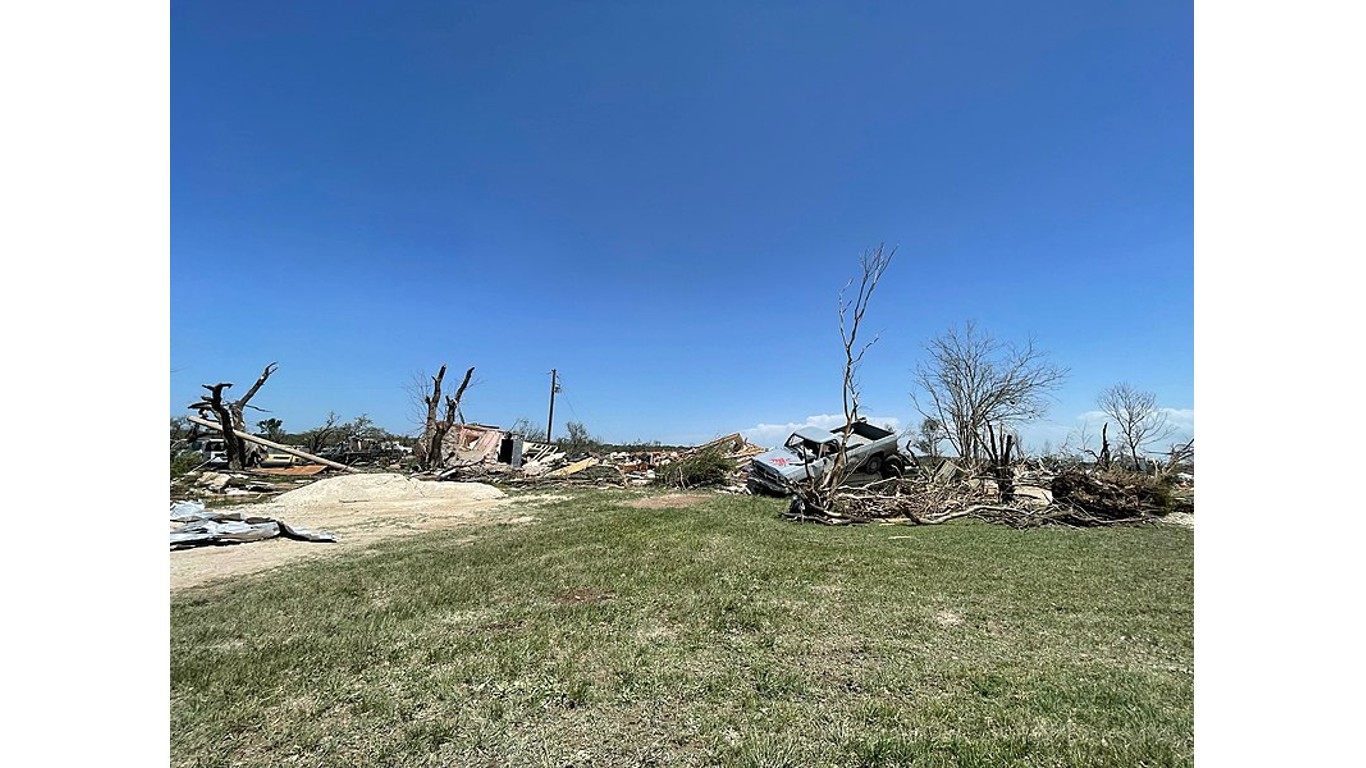
Southern Severe Weather
> Disaster: Severe Storm
> Begin and end date: April 11 to April 13
> CPI-adjusted estimated cost: $2.76 billion – #6 highest of the year
> Deaths: 1
A storm front that stalled over Arkansas brought three days of severe weather to the region as far away as central Texas, which received a pounding of large hail and one moderately strong tornado. But Arkansas bore the brunt of this severe weather system that spit out several tornadoes and softball-sized hail.
[in-text-ad]

Southern and Central Severe Weather
> Disaster: Severe Storm
> Begin and end date: May 1 to May 3
> CPI-adjusted estimated cost: $1.16 billion – #15 highest of the year
> Deaths: 1
Severe supercell thunderstorms (distinguished by their height and broad anvil-like shape) formed as an upper-level front moved from the Rocky Mountains to the central plains and interacted with dry weather over eastern New Mexico. The supercells produced wind gusts as high as 86 miles per hour and poured baseball-sized hail in parts of the Texas and Oklahoma panhandles, damaging roofs and vehicles.

North Central Hail Storms
> Disaster: Severe Storm
> Begin and end date: May 9 to May 9
> CPI-adjusted estimated cost: $2.22 billion – #9 highest of the year
> Deaths: 0
The north-central portion of the country was hit hard in May 2022 by a one-two punch of two thunderstorm systems that struck in one day in central and eastern Minnesota, producing sizable hail and wind gusts of up to 50 miles per hour. Two days later, another bout of costly and severe weather hit the region followed by yet another set of hail storms just seven days after that. The central and north-central parts of the country were also struck with three other weather events, each causing between $1.34 billion and $3.25 billion in damages.
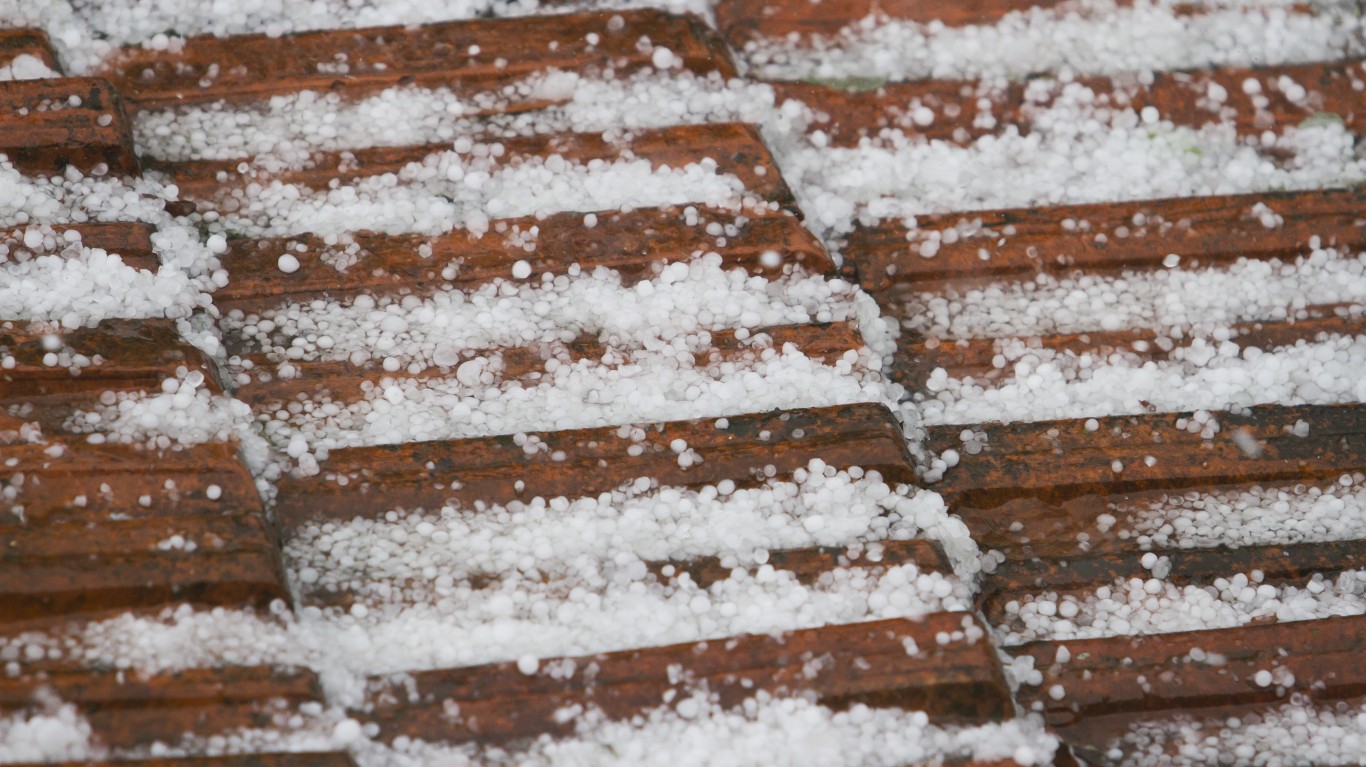
North Central Severe Weather
> Disaster: Severe Storm
> Begin and end date: May 11 to May 12
> CPI-adjusted estimated cost: $2.79 billion – #5 highest of the year
> Deaths: 1
A rare line of thunderstorms marched across portions of Minnesota, Wisconsin, and the Dakotas over two days, producing large hail and intense wind gusts of more than 75 miles per hour that substantially damaged buildings and other infrastructure. The storm was “unusually early and strong in heat and humidity,” said AccuWeather meteorologist Alex Sosnowski, who pointed out that these types of storm fronts typically occur in July.
[in-text-ad-2]
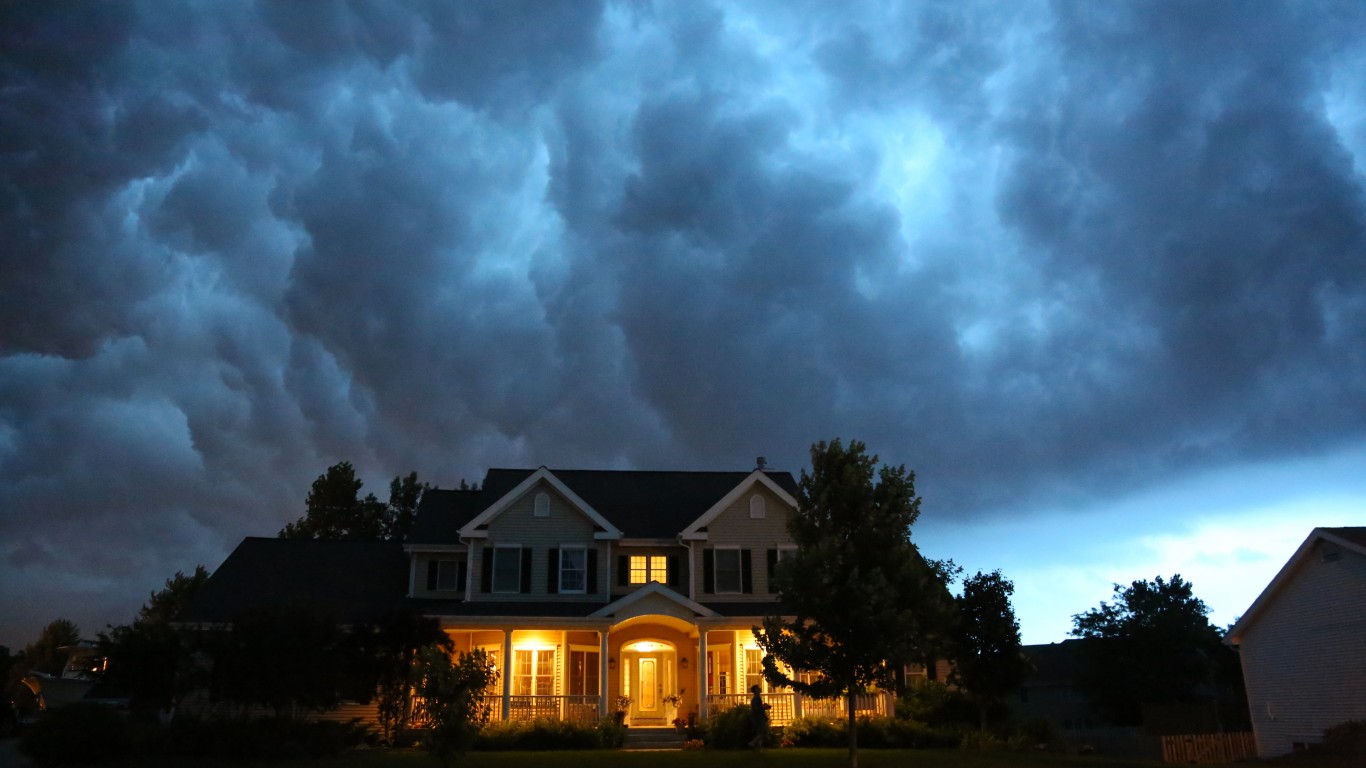
North Central Hail Storms
> Disaster: Severe Storm
> Begin and end date: May 19 to May 19
> CPI-adjusted estimated cost: $2.48 billion – #8 highest of the year
> Deaths: 0
A series of severe storms dumped ping pong-sized hail on parts of Minnesota and Wisconsin. Heavy wind gusts, urban flooding, and one tornado were also reported during this weather event. The storms were part of one of the most active months of severe weather in years in Minnesota. Tornado and severe storm warnings were the highest on record for that time of year, according to the state’s Department of Natural Resources.
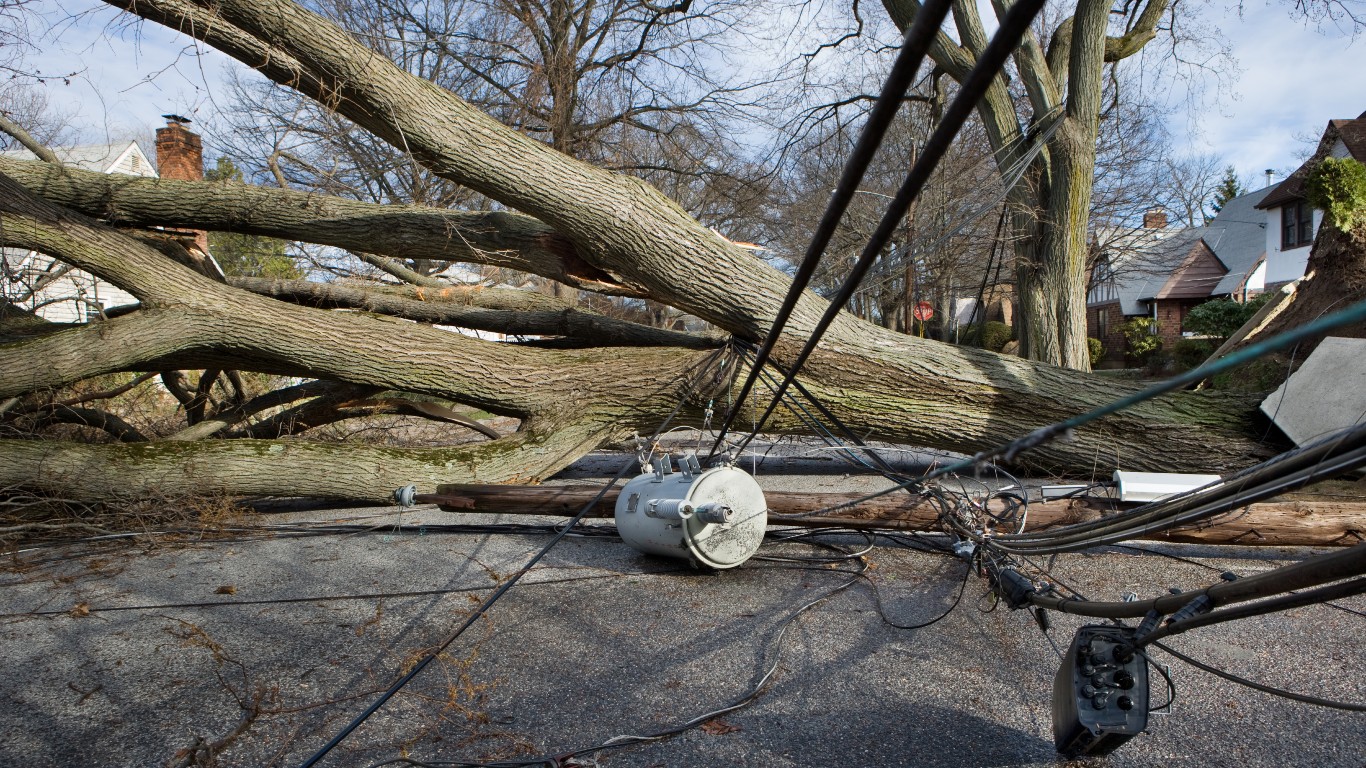
Central Severe Weather
> Disaster: Severe Storm
> Begin and end date: June 7 to June 8
> CPI-adjusted estimated cost: $1.91 billion – #10 highest of the year
> Deaths: 0
Despite above-average temperatures and lower than average precipitation in the contiguous United States for the month of June, some states experienced higher-than-average precipitation. Several severe storms hit the central part of the country in early June, caused by a very hot and humid air mass that generated severe storms, hail, and wind gusts of up to 80 miles per hour in parts of Kansas, Nebraska, Missouri, and Iowa.
[in-text-ad]
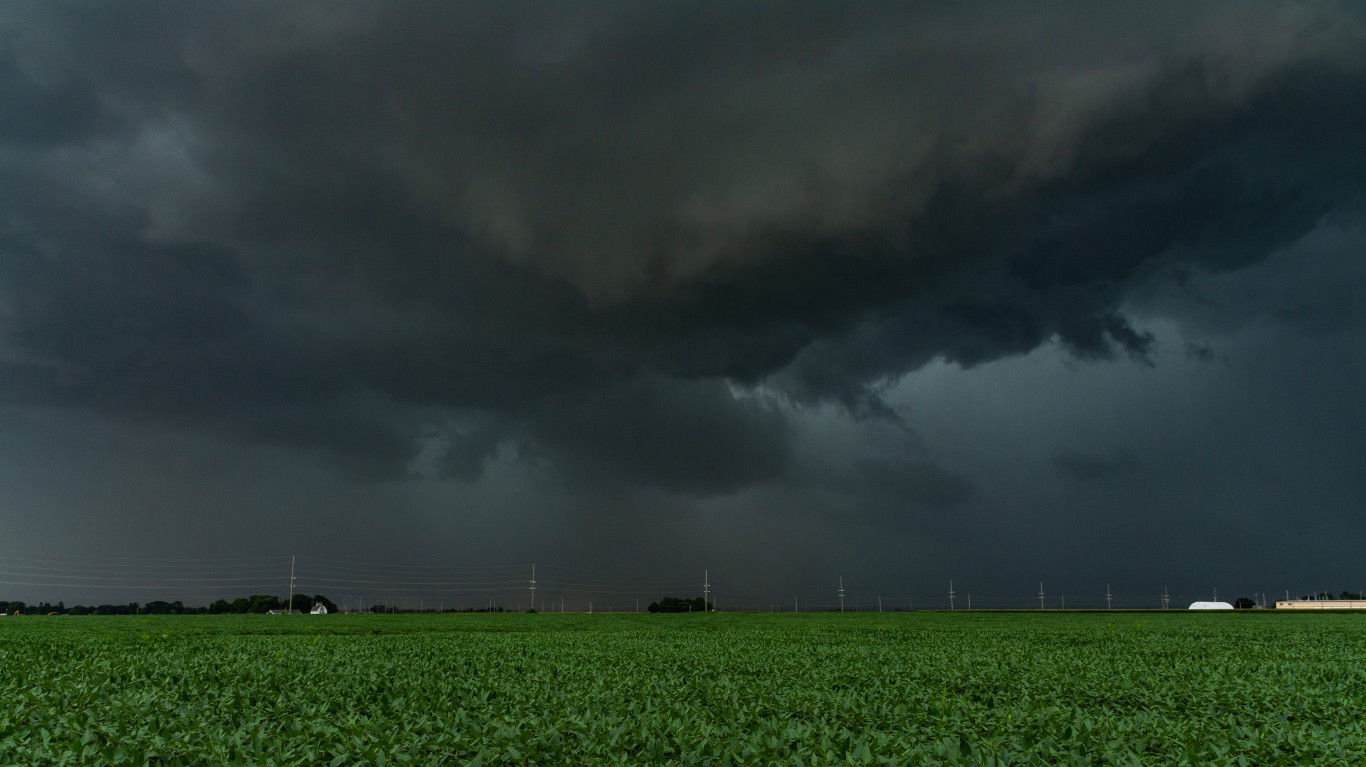
Central Derecho
> Disaster: Severe Storm
> Begin and end date: June 13 to June 13
> CPI-adjusted estimated cost: $3.25 billion – #3 highest of the year
> Deaths: 1
A massive line of fast-moving thunderstorms popularly known as a derecho sprinted from Wisconsin to Ohio, leaving a multi-state scar of downed trees and power lines, damaging public infrastructure and private property. This collection of severe thunderstorms tracked along a front that separated between hot and humid conditions in the southwest and cooler and drier weather in the northeast. NOAA estimated sustained winds to be as high as 70 miles per hour.
North Central and Eastern Severe Weather
> Disaster: Severe Storm
> Begin and end date: July 22 to July 24
> CPI-adjusted estimated cost: $1.34 billion – #13 highest of the year
> Deaths: 1
The north-central part of the country was again struck by severe weather a month after a massive line of fast-moving thunderstorms, popularly known as a derecho, blew through parts of the region, inflicting more than $3 billion in damage. Supercell thunderstorms moving out of North Dakota merged over southern and central Minnesota, pushing in a southeasterly direction into northeastern Iowa, part of which bore the brunt of damage.
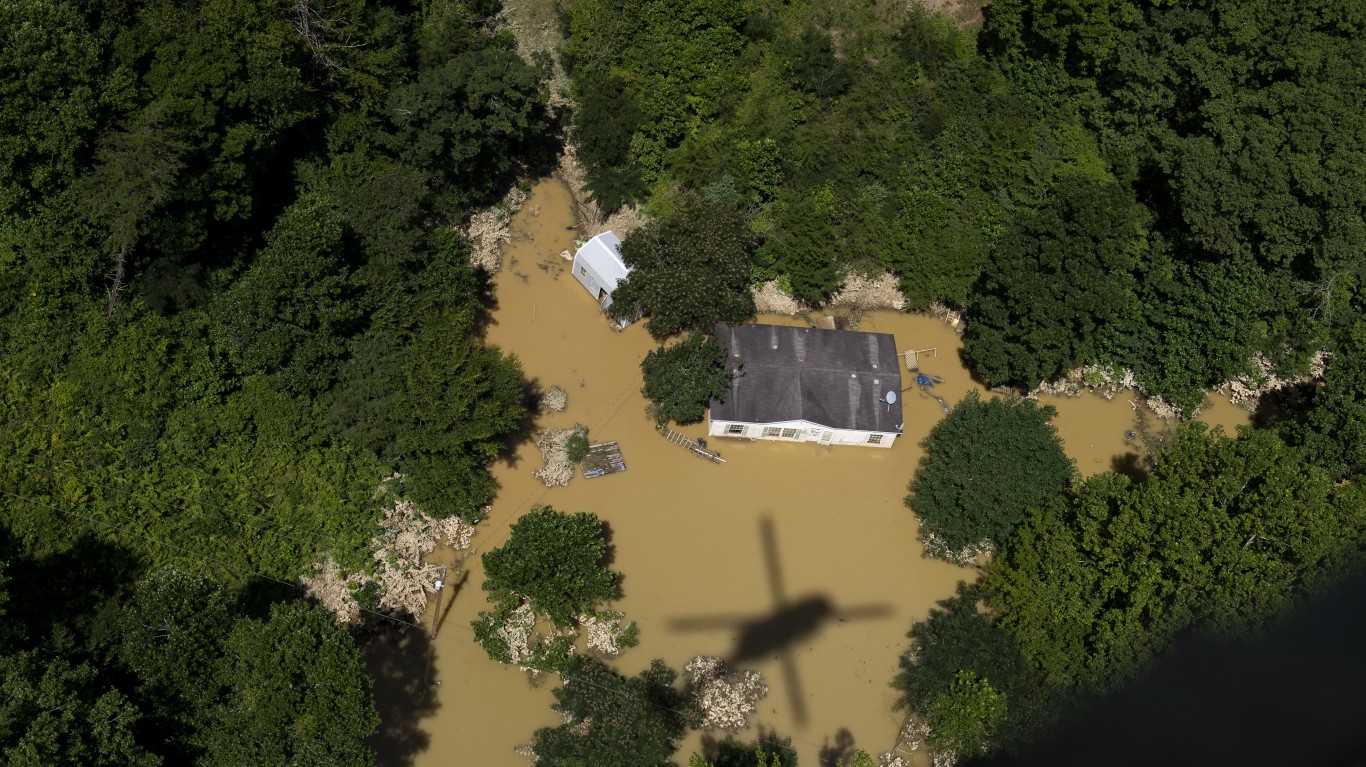
Kentucky and Missouri Flooding
> Disaster: Flooding
> Begin and end date: July 26 to July 28
> CPI-adjusted estimated cost: $1.47 billion – #11 highest of the year
> Deaths: 42
A large storm front stalled over parts of Missouri and Kentucky, quickly dumping historic levels of rainfall that trapped many in their homes and vehicles, killing dozens in the process. Kentucky’s central Appalachia region was hit particularly hard due in part to the many narrow valleys situated between hills (known colloquially as hollers) that quickly turned into raging debris-laden rivers.
[in-text-ad-2]
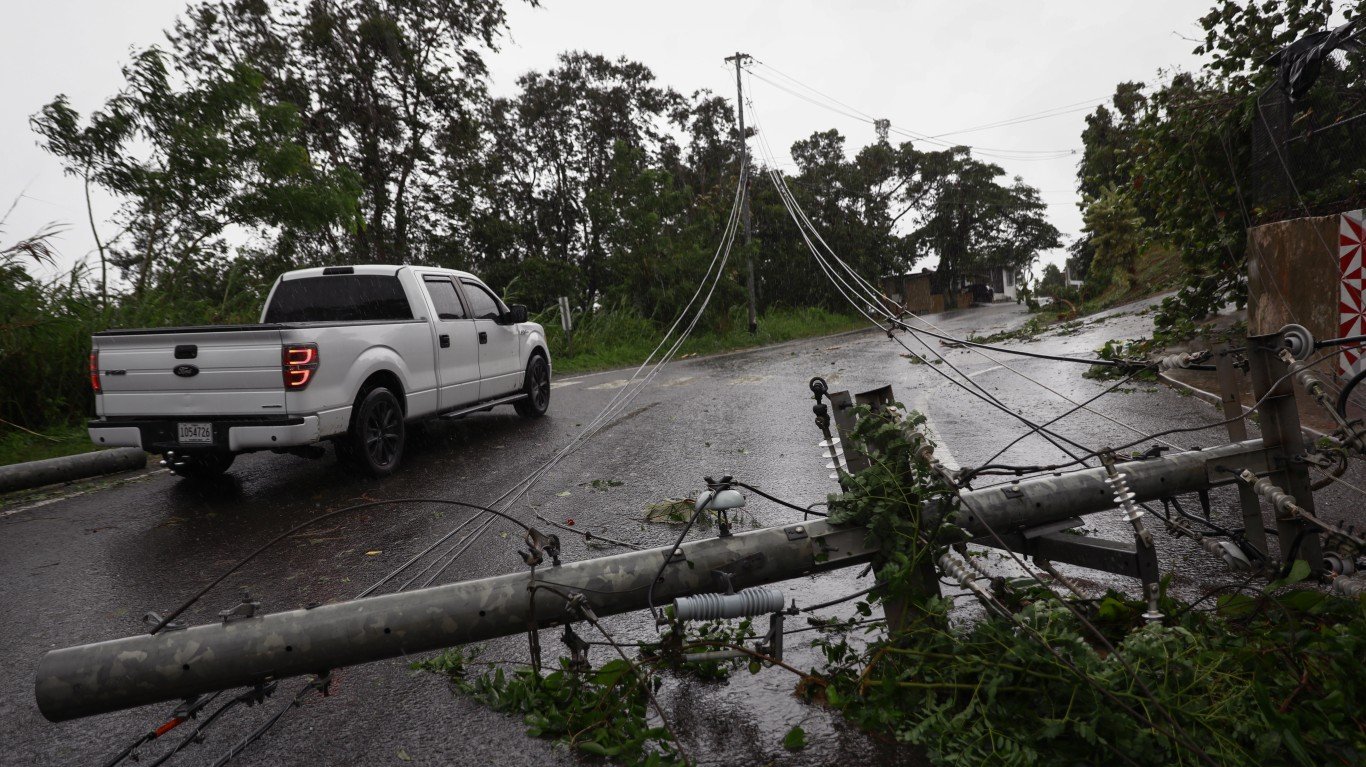
Hurricane Fiona
> Disaster: Tropical Cyclone
> Begin and end date: Sep 17 to Sep 18
> CPI-adjusted estimated cost: $2.54 billion – #7 highest of the year
> Deaths: 25
Three tropical cyclones in 2022 inflicted between $1 billion and $113 billion in damages in the U.S. between Sept. 17 and Nov. 11. The first was Hurricane Fiona, which delivered massive flooding to Puerto Rico. One weather station measured more than 27 inches of rainfall in 24 hours, while other areas were inundated with 12 to 18 inches of rain the same period of time. The cyclone also impacted the U.S. Virgin Islands, the Dominican Republic, and Haiti.
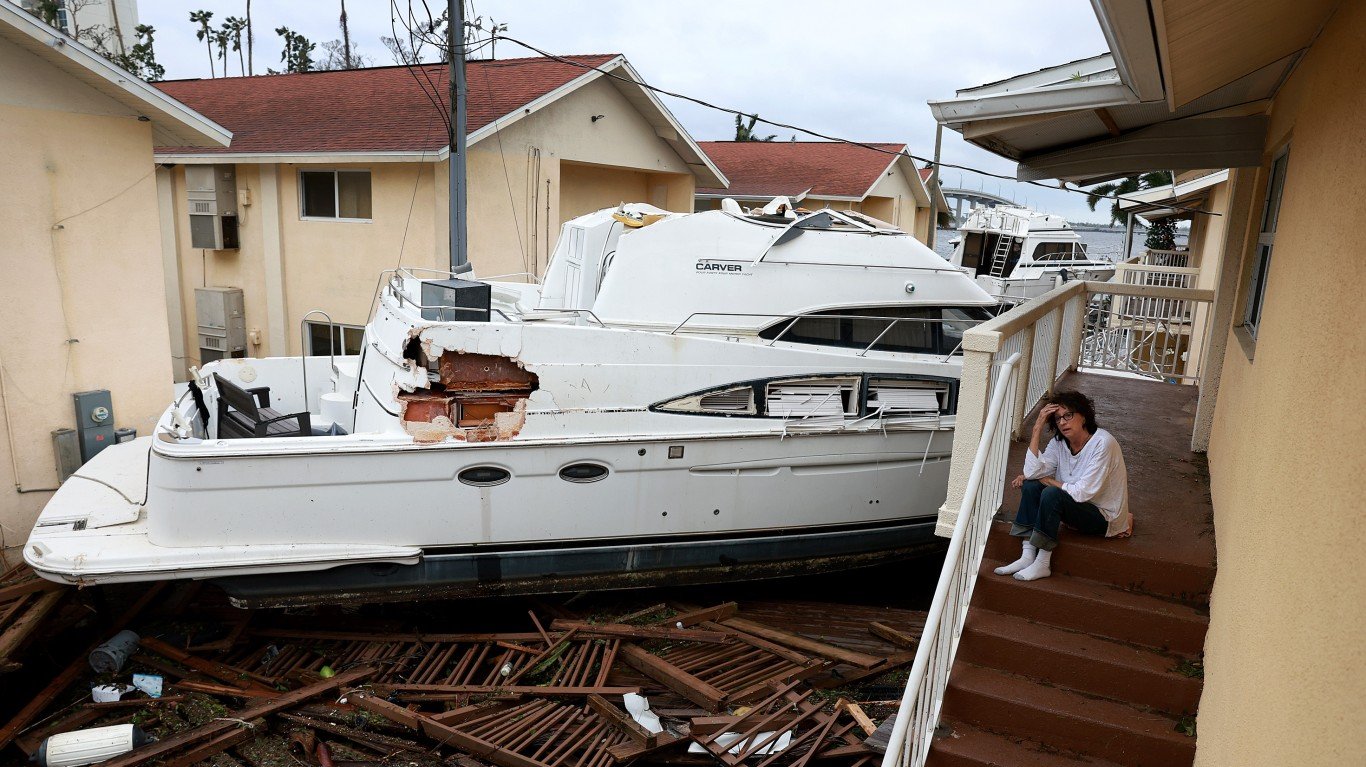
Hurricane Ian
> Disaster: Tropical Cyclone
> Begin and end date: Sep 28 to Sep 30
> CPI-adjusted estimated cost: $112.92 billion – #1 highest of the year
> Deaths: 152
Hurricane Ian was the costliest and deadliest weather disaster to strike the U.S. in 2022. The cyclone made two landfalls, first in Florida as a massive Category 4 storm, meaning winds of 130 to 156 miles per hour, causing major flooding and significant loss of life. The storm then drifted offshore and quickly returned to the coast of South Carolina as a Category 1 hurricane.
[in-text-ad]
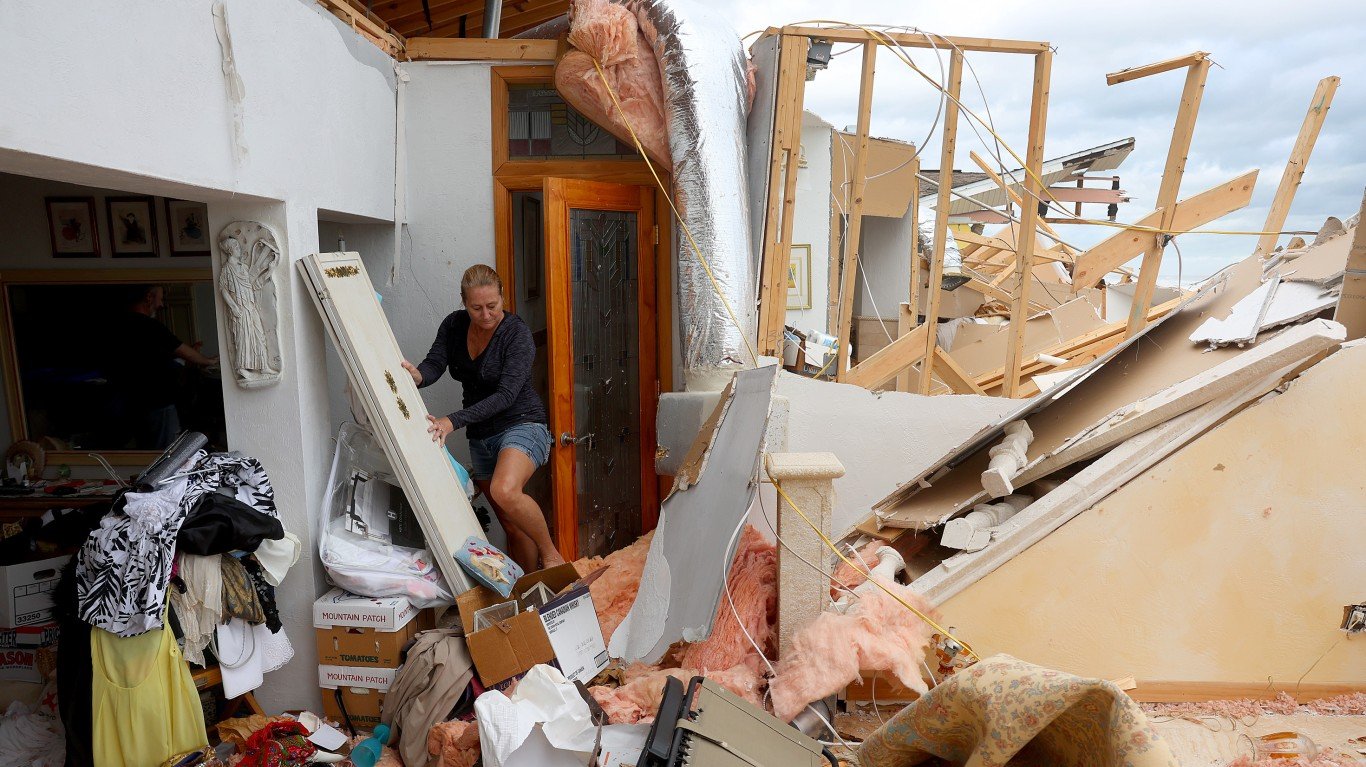
Hurricane Nicole
> Disaster: Tropical Cyclone
> Begin and end date: Nov 10 to Nov 11
> CPI-adjusted estimated cost: $1.02 billion – #17 highest of the year
> Deaths: 5
By the standards of tropical cyclones, Hurricane Nicole inflicted light economic damage, comparable to some hail storms that struck Texas earlier that year. The late-season Category 1 hurricane made landfall south of Vero Beach, Florida, then weakened as it passed over the central and southern parts of the state. Some parts of the impacted area were still cleaning up from the much larger Hurricane Ian that smashed into the west coast of Florida less than two weeks earlier.
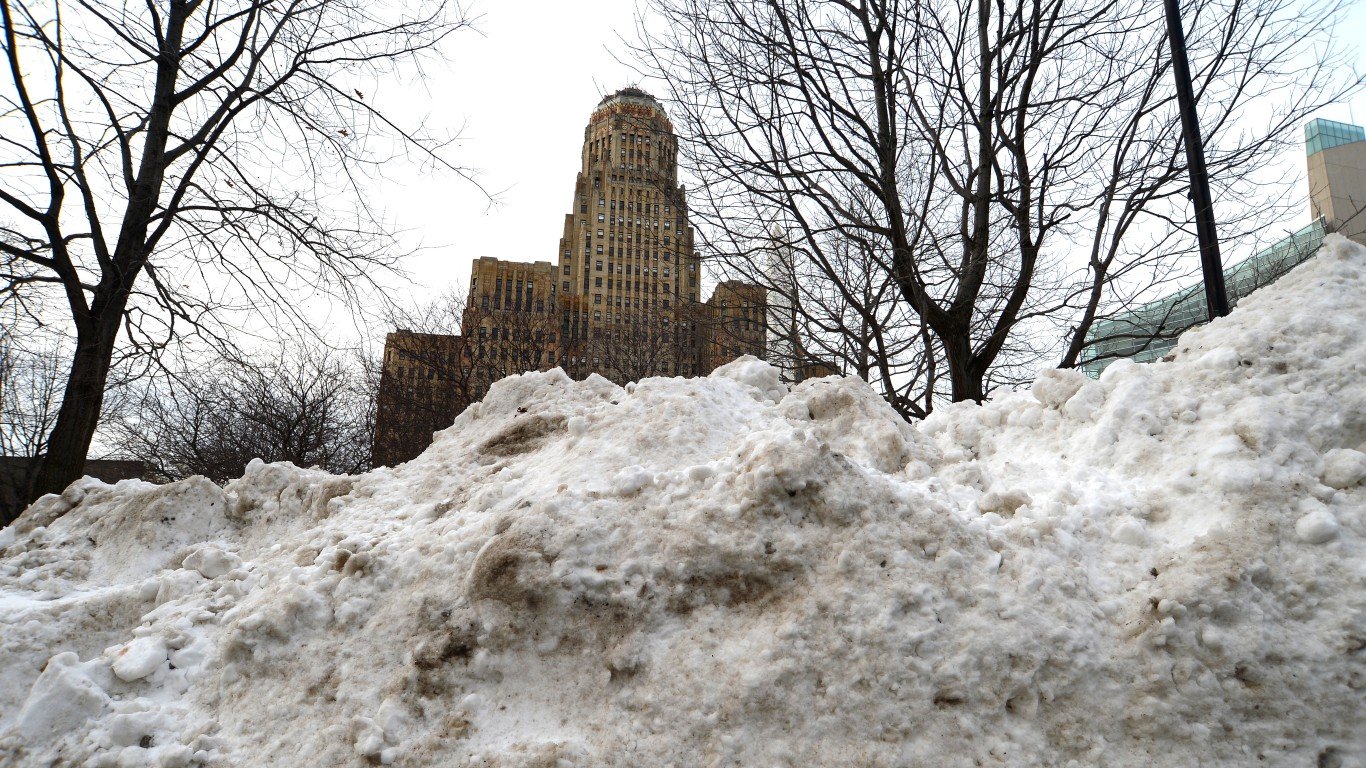
Central and Eastern Winter Storm and Cold Wave
> Disaster: Winter Storm
> Begin and end date: Dec 21 to Dec 26
> CPI-adjusted estimated cost: TBD
> Deaths: 87
In the final days of 2022, a massive blast of heavy rains, snow, ice storms, and high winds plunged much of the nation into a deep freeze. Temperatures dropped more than 30 degrees in just 18 hours. The precipitation, coupled with such a rapid drop in temperature, caused flash freezes and visibility hazards on many of the country’s roads.
Cities near the Great Lakes suffered from heavy Lake Effect snowfall, most notably Buffalo, which was buried in nearly 65 inches of snow in December, the third-highest on the city’s record. More than 200 million people were shivering under winter weather advisories, and more than a million people lost power. The storm claimed 87 lives. The NOAA has yet to publish the economic cost of this weather disaster, but listed it under billion-dollar weather and climate disasters.
Sponsored: Find a Qualified Financial Advisor
Finding a qualified financial advisor doesn’t have to be hard. SmartAsset’s free tool matches you with up to 3 fiduciary financial advisors in your area in 5 minutes. Each advisor has been vetted by SmartAsset and is held to a fiduciary standard to act in your best interests. If you’re ready to be matched with local advisors that can help you achieve your financial goals, get started now.
Thank you for reading! Have some feedback for us?
Contact the 24/7 Wall St. editorial team.
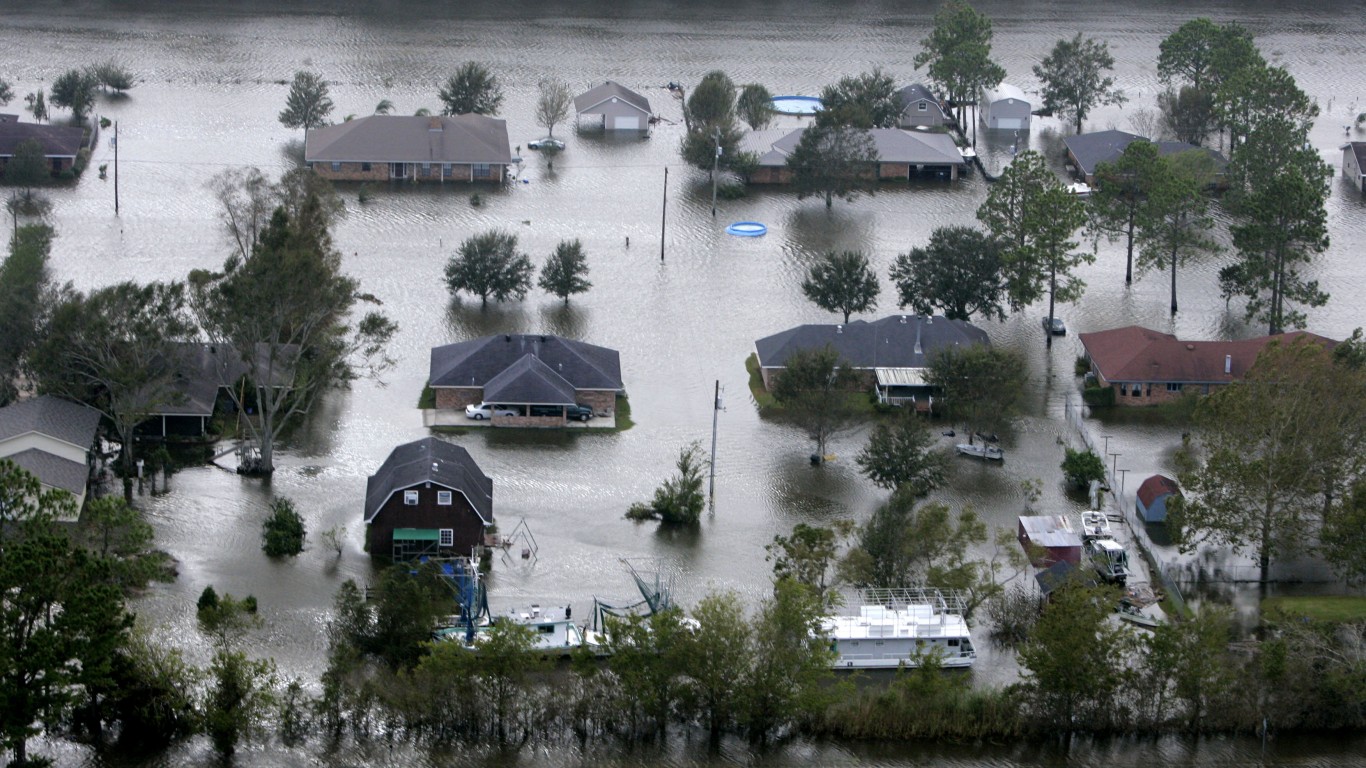 24/7 Wall St.
24/7 Wall St.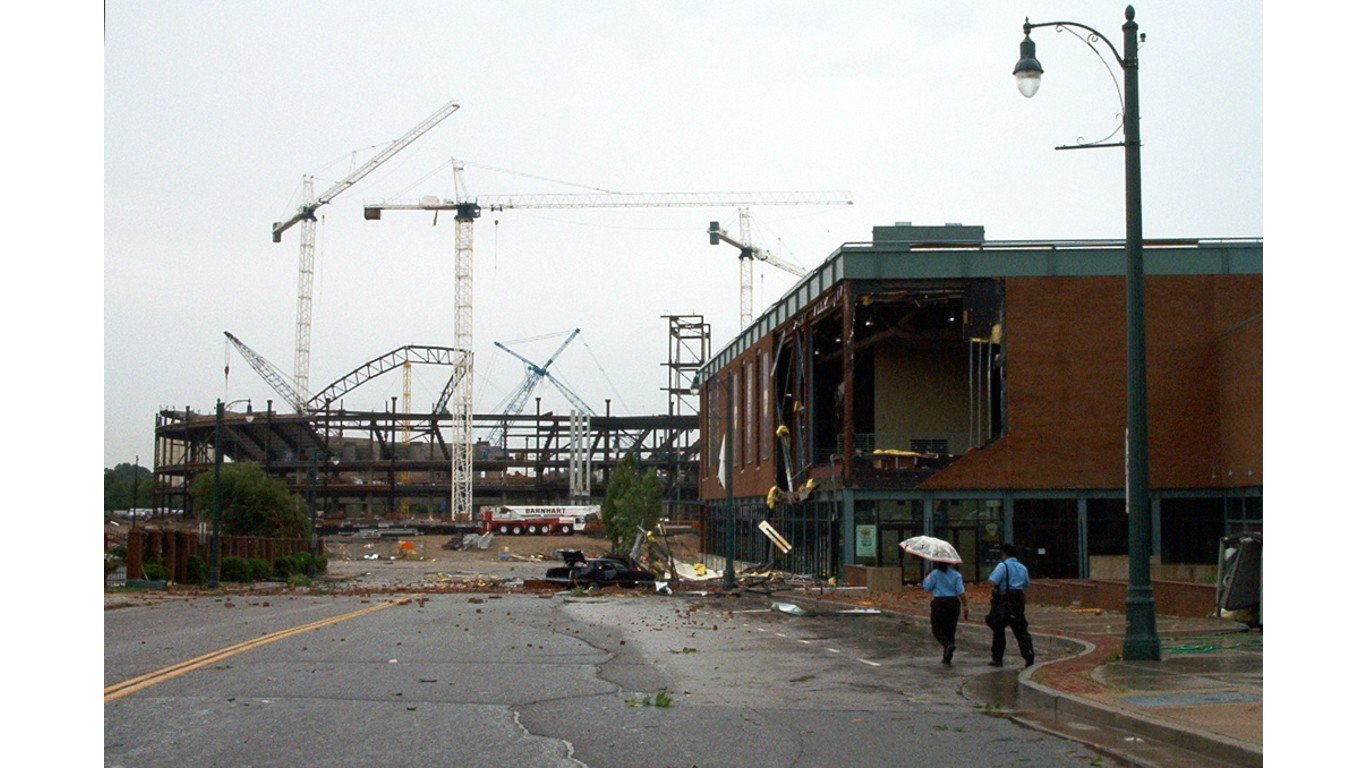
 24/7 Wall St.
24/7 Wall St.